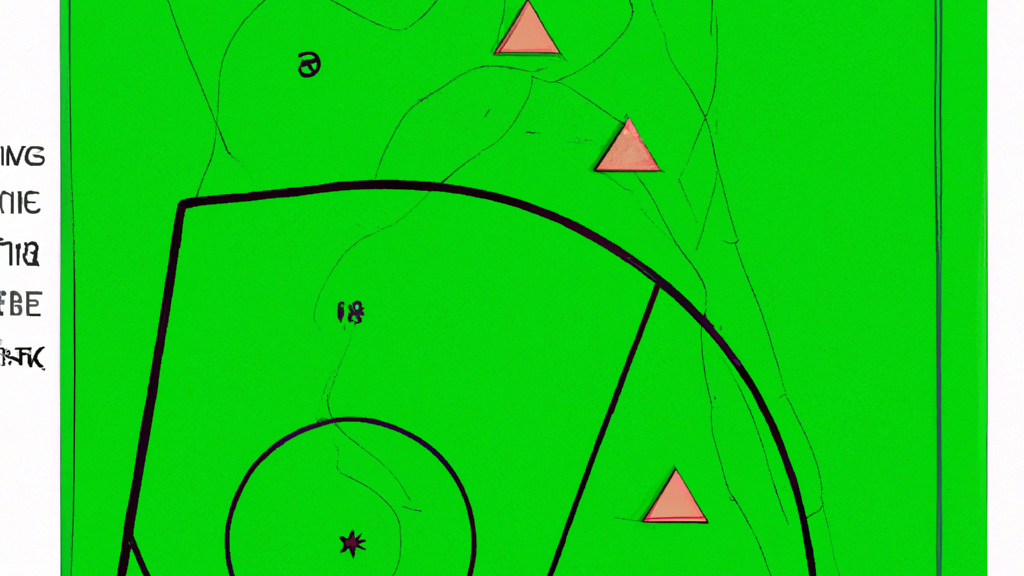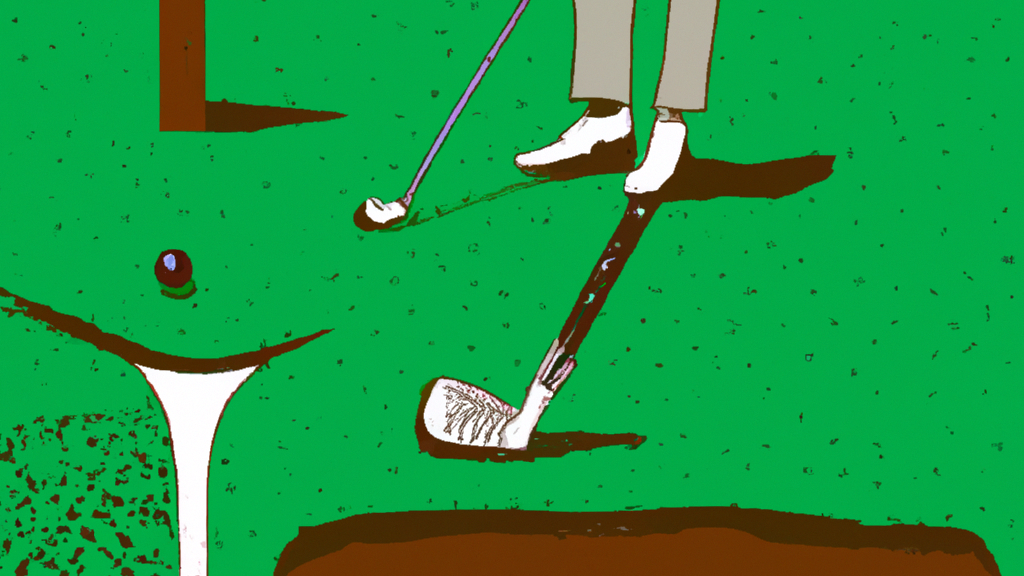THE BENEFITS OF AERATION IN GOLF COURSE MANAGEMENT
Golf courses are a sight to behold, with their lush greenery and perfectly manicured lawns. However, maintaining a golf course is no easy feat, and it requires a lot of effort and resources. One of the most important aspects of golf course management is aeration. Aeration is the process of creating small holes in the soil to allow air, water, and nutrients to penetrate the roots of the grass. This process has numerous benefits, including improved soil structure, enhanced water infiltration, and better nutrient uptake.
In this blog post, we will explore the benefits of aeration in golf course management and how it can help golf course owners and managers maintain a healthy and beautiful course. So, whether you are a golf enthusiast, a country club member, or a professional golfer, read on to learn more about the benefits of aeration in golf course management.

THE BENEFITS OF AERATION IN GOLF COURSE MANAGEMENT
Golf courses are a vital part of the golfing and country club life. They are the heart and soul of the game, and they require a lot of maintenance to keep them in top condition. One of the most important aspects of golf course management is aeration. Aeration is the process of creating small holes in the soil to allow air, water, and nutrients to penetrate the roots of the grass. This process has many benefits, and in this article, we will explore the benefits of aeration in golf course management.
1. Improved Soil Structure
Aeration is essential for improving the soil structure of a golf course. Over time, the soil can become compacted due to heavy foot traffic, golf carts, and other equipment. Compacted soil can prevent water, air, and nutrients from reaching the roots of the grass, which can lead to poor growth and health of the turf. Aeration helps to break up the compacted soil, allowing water, air, and nutrients to penetrate the roots of the grass. This results in healthier turf that is more resistant to disease and pests.
2. Enhanced Water Infiltration
Aeration also helps to enhance water infiltration in the soil. When the soil is compacted, water can pool on the surface, leading to runoff and erosion. Aeration creates small holes in the soil, allowing water to penetrate the soil and reach the roots of the grass. This helps to reduce runoff and erosion, which can improve the overall health of the golf course.
3. Improved Nutrient Uptake
Aeration also improves the nutrient uptake of the grass. When the soil is compacted, nutrients can become trapped in the soil, preventing them from reaching the roots of the grass. Aeration helps to break up the compacted soil, allowing nutrients to penetrate the roots of the grass. This results in healthier turf that is more resistant to disease and pests.
4. Reduced Soil Compaction
Aeration also helps to reduce soil compaction. When the soil is compacted, it can be difficult for the roots of the grass to grow and spread. This can lead to thin and patchy turf, which can be unsightly and difficult to play on. Aeration helps to break up the compacted soil, allowing the roots of the grass to grow and spread. This results in thicker and healthier turf that is more resilient to wear and tear.
5. Improved Drainage
Aeration also helps to improve drainage on the golf course. When the soil is compacted, water can pool on the surface, leading to soggy and muddy conditions. Aeration creates small holes in the soil, allowing water to penetrate the soil and drain away from the surface. This helps to improve the overall playing conditions of the golf course, making it more enjoyable for golfers.
6. Reduced Thatch Buildup
Aeration also helps to reduce thatch buildup on the golf course. Thatch is a layer of dead grass and other organic matter that accumulates on the surface of the soil. When thatch buildup becomes too thick, it can prevent water, air, and nutrients from reaching the roots of the grass. Aeration helps to break up the thatch layer, allowing water, air, and nutrients to penetrate the roots of the grass. This results in healthier turf that is more resistant to disease and pests.
7. Improved Turf Resilience
Aeration also helps to improve the resilience of the turf on the golf course. When the soil is compacted, the roots of the grass can become weak and shallow. This can make the turf more susceptible to damage from foot traffic, golf carts, and other equipment. Aeration helps to break up the compacted soil, allowing the roots of the grass to grow deeper and stronger. This results in turf that is more resilient to wear and tear, making it more durable and long-lasting.
Conclusion
In conclusion, aeration is an essential part of golf course management. It has many benefits, including improved soil structure, enhanced water infiltration, improved nutrient uptake, reduced soil compaction, improved drainage, reduced thatch buildup, and improved turf resilience. By incorporating aeration into their maintenance program, golf course managers can ensure that their golf course is in top condition, providing golfers with a high-quality playing experience. So, if you are a golf course manager or a golfer, make sure that aeration is a part of your golf course maintenance program.

- TURF MANAGEMENT: To aerate, or not to aerate: That is the …
“The goal of an aerification is to improve the health of the turf,” he says. “If the turf will be harmed by an aerification, then there is no benefit to it. - The Importance of Pond Aeration for Your Golf Course
Any member of a golf course maintenance team knows that aerating turf is required … algae and aquatic weeds can greatly benefit from adequate aeration. - New Trends In Aeration and Organic Matter Management
Aug 7, 2020 … Golfers and superintendents agree that healthy greens and firm playing … Traditionally, most courses have relied on hollow-tine aeration … - The Benefits of Lake and Pond Aeration
Pond aeration will help enhance pond fish habitats, improve water quality, … golf courses, commercial developments, ranches, private landowners, … - The Ugly Truth About Golf Course Aeration – Rumbling Bald on Lake …
Aerification (also known as aeration) achieves three important objectives. It relieves soil compaction, it provides a method to improve the soil mixture around … - Why Aerate? | RYAN® Turf Renovation Equipment
WHAT ARE THE BENEFITS OF AERATION? Core aeration can help make your lawn healthier and reduce its maintenance requirements through these means:. - Walt Disney World® Golf Course Aeration – Short Term Disruption Is …
Another course maintenance tradition, typically performed in the Spring and in the … There are three primary benefits to aeration, tied to reducing the … - Aeration: a must-do for successful golf course management | Ocala …
Jun 17, 2016 … Following Memorial Day the team here at Ocala Golf Course began aerating the … Among the many benefits achieved through aeration are:. - Fountain vs Diffusing Aeration – Lake Management Services
May 17, 2022 … Any waterbody can benefit from aeration, but it’s the type of aeration that’s difficult to choose. … otterbine aerator at golf course pond. - The Ugly Truth About Golf Course Aeration | Rumbling Bald on Lake …
Aerification (also known as aeration) achieves three important objectives. It relieves soil compaction, it provides a method to improve the soil mixture around …
Fun facts about The Benefits of Aeration in Golf Course Management
- The first recorded game of golf was played in Scotland in the 15th century.
- Golf balls were originally made out of wood until the mid-1800s when they began to be made from rubber.
- The Masters Tournament, one of golf’s four major championships, has been held annually at Augusta National Golf Club since 1934.
- Professional golfer Tiger Woods has won a total of 82 PGA Tour events, tying him with Sam Snead for the most wins ever on tour.
- In addition to physical skill and technique, mental toughness is also crucial for success in golf due to its individual nature and long periods between shots.
- Many country clubs offer amenities beyond just golfing such as tennis courts, swimming pools, and fine dining options for members and their guests.
- Caddies have been a part of professional golf since its early days but are now less common due to advancements in technology like GPS devices that can provide yardage information on courses.





